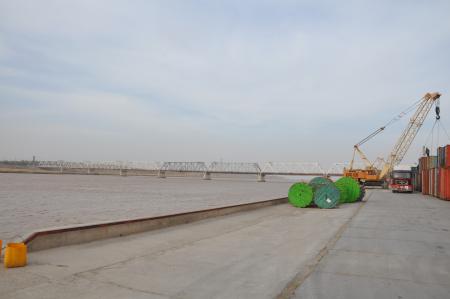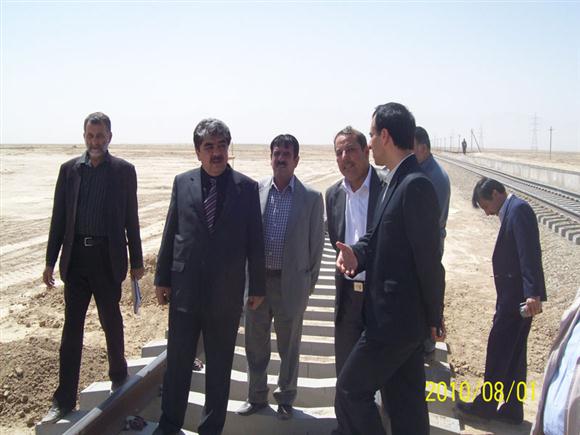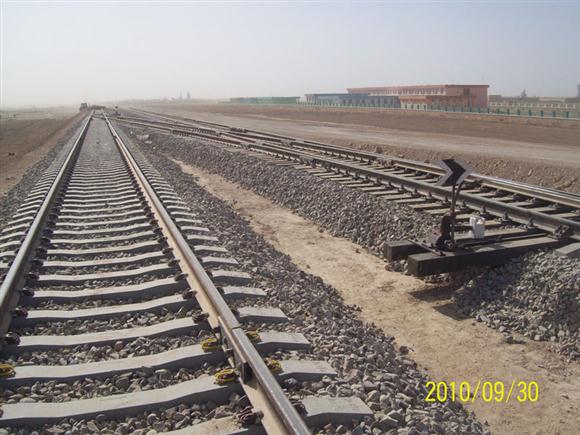Hairatan-to-Mazar-i-Sharif railway opens
TASHKENT – Service began last weekend on the long-awaited Hairatan-to-Mazar-i-Sharif railway.
Uzbekistan Railways (UTY) built the route, which was scheduled to open in July before contingencies forced a postponement.
“We have been working out the route’s status as well as who will run it and how (since early July),” said Rasul Holikov of UTY.
Uzbekistan and Afghanistan signed a three-year contract August 4 under which Uzbekistan will provide commercial services and operate the 75km railway. For now, the tracks carry only freight. Technical problems, such as reinforcement of sections of the trackbed and security on the Afghan portion, have also been addressed, Holikov said.
Original plans called for both countries to operate the railway, but a lack of Afghan equipment required UTY to take over full operation.
“We hope that while our company is operating the railway, Afghanistan will be able to train its personnel, acquire the necessary rail equipment and take over the route … for its own use,” Holikov said.
Afghanistan conceded a current lack of workers and equipment.
“We also do not have enough rolling stock – locomotives, which cost approximately $300,000 each, and freight cars – to ensure uninterrupted freight transport,” said Walid Obaidi, an Afghan locomotive engineer from Mazar-i-Sharif. “It is better in this case to rely on a company with considerable material resources and a good reputation in the rail sector.”
But Afghanistan must increase its efforts to develop rail transport for economic reasons, said Mohammad Daud of the Moscow Centre for the Study of Modern Afghanistan.
“The Afghan market is attractive to all of Central Asia’s countries. For example, Uzbekistan exports electricity and clothing and provides transport services,” said Daud. Now, freight deliveries can be conducted routinely, he said.
“The railway has unquestionably stimulated development of the entire northern region,” said political analyst Valerii Han. “New jobs were created, and local enterprises started operating. The railway will affect the development of agriculture, industry and mining … in these regions. In the future … it will help the Central Asian countries access the sea … (at) the Karachi seaport.”
Uzbek and Afghan security agencies are working together to ensure the lines are safe. The railway’s security will be further strengthened in the future, UTY said.
“We plan to amend the Law on Railways to further ensure the security of rail transport, prevent possible emergencies and eliminate threats to people’s lives,” said Damir Siddikov, an Uzbek senator. “We will be introducing the National Railway Transport Safety System.”
“I drove a locomotive through all of the stations up to Mazar-i-Sharif,” said Umid Hursandov, a UTY engineer. “Like all other the new railways built by our company, (it) is reliable and meets all standards. Many railway workers in our country are worried about their safety if they work this route. Of course, it would be foolish not to recognise that tension in the region persists, but I saw sound security along the entire railway and soldiers were guarding every crossing and important railway yard.”
Source: Hairatan-to-Mazar-i-Sharif railway opens, Maksim Yeniseyev, CentralAsiaOnline.com, 2011-08-23
The photo captioned “An Uzbekistan Railways train departs from Hairatan, Uzbekistan, to Mazar-i-Sharif, Afghanistan, August 21” appears to show a VL80 electric locomotive. UTY operates the type, however the Afghan line is not electrified.




